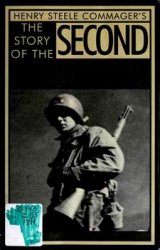The meeting between Columbus’s men and the Arawak was momentous in more ways than one. Not only did it lead to the European exploration and settlement of the Americas, but it also led to the diffusion of various cultural traits around the world. For example, this was the first time Europeans had seen or heard of the tobacco plant. In fact, the word tobacco comes from the Spanish word tabaco, derived from the Arawak word for “cigar.” Moreover, the Europeans had never thought to use hammocks before encountering the Arawak. Afterward, they started placing them on their ships as beds. This also was the first time the Europeans saw most of the plants cultivated by the Arawak. Some of these, such as corn and potatoes, would eventually become food staples all over the world.
The peaceful Arawak treated the Spanish well, sharing food and knowledge with them. They also helped rescue some of Columbus’s men during a shipwreck off Hispaniola. But Spanish mistreatment of the Arawak led to conflict. Columbus forced some Arawak from Watling Island to accompany him on the rest of his first journey, setting a precedent. Colonists left behind by Columbus on Hispaniola forced Arawak men to help look for gold. Some among them rose up in rebellion, killing all the outsiders.
On his second voyage, Columbus established another colony on the coast of Hispaniola. The Spaniards used the threat of violence to have the Arawak bring gold to them on a regular basis. But the hoped-for riches were not obtained. Instead, Columbus began taking Arawak as slaves for profit.
This pattern of cruelty continued in Spanish and Indian relations. Columbus eventually lost favor with the king and queen of Spain and never realized many of his ambitions. When he died in Europe, he was a forgotten man. But the Spanish who followed him to the Americas further
Arawak stone sculpture known as a Death's Head (The purpose of these carvings is unknown.)
Exploited the Indians, forcing them to work in mines and on farms. They also made the Native peoples give up their traditional religions to practice Catholicism. The Spanish pushed on into Mexico, Florida, and other parts of the Americas to expand their empire.
As for the Native peoples of the Caribbean Islands, their numbers were depleted. Many were struck down by European diseases. Others died from starvation because the Spanish overworked them and underfed them. Some even committed suicide out of despair over the loss of their freedom. Mothers sometimes killed their newborns rather than see them grow up as slaves. Many survivors lost their tribal identity through intermarriage with the colonists.




 World History
World History









